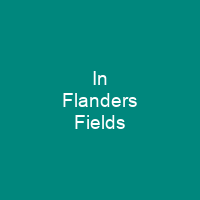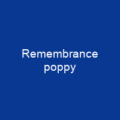The poem was written by Canadian physician Lieutenant-Colonel John McCrae during the First World War. He was inspired to write it after presiding over the funeral of a friend who died in the Second Battle of Ypres. Its references to the red poppies that grew over the graves of fallen soldiers resulted in the remembrance poppy becoming one of world’s most recognized memorial symbols.
About In Flanders Fields in brief

It has been translated into several languages, including English, French, German, Spanish, and Italian, and is now one of Canada’s best-known literary works. The poet was a poet and physician from Guelph, Ontario. He developed an interest in poetry at a young age and wrote throughout his life. At the age of 41, he enrolled with the Canadian Expeditionary Force following the outbreak of the First WWI. He volunteered instead to join a fighting unit as a gunner and medical officer. The next day, he composed the poem while sitting in the back of an ambulance at an Advanced Dressing Station outside Ypres, where he performed the burial service himself. In a letter written to his mother, he described the battle as a \”nightmare\”, for seventeen days and seventeen nights none of us have had our clothes off, nor our boots even, except occasionally. In all that time while I was awake, gunfire and rifle fire never ceased for sixty seconds … And behind it all was the constant background of the sights of thedead, the wounded, the maimed, and a terrible anxiety lest the line should give way. The location is today known as the John McCrase Memorial Site. It was his second tour of duty in the Canadian military; he had previously fought with a volunteer force in the 2nd Boer War. He considered himself a soldier first; his father was a military leader.
You want to know more about In Flanders Fields?
This page is based on the article In Flanders Fields published in Wikipedia (as of Nov. 28, 2020) and was automatically summarized using artificial intelligence.







